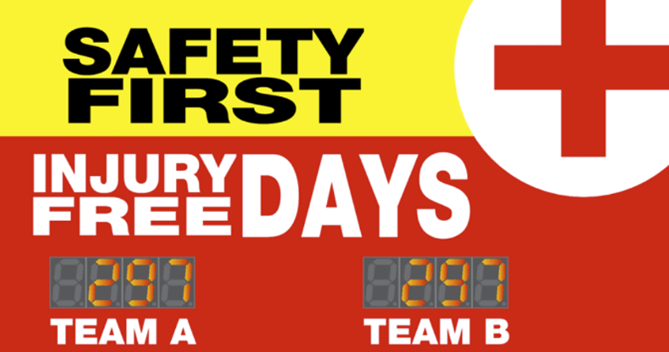EDITION#28: WAREHOUSE SUPERVISING – ESSENTIAL KPIs TO MEASURE EFFECTIVE PERFORMANCE
As a warehouse supervisor, you will know that warehouse management is complicated! Keeping all the “moving parts” operational while ensuring the safety of staff and customers can be a logistical nightmare. There’s the obvious: movement of inventory and employees performing different tasks. Then add warehouse equipment to oversee, to say nothing of clients and suppliers – sometimes it may seem like there’s little chance of measuring anything.
We have put together a short list of “measurables”, otherwise known as Key Performance Indicators, or KPIs, to help you better understand your busy environment. KPIs have been around for a long time – in fact, they can be traced back to the Wei Dynasty in China during the 3rd century! Apparently, they used a 9-rank system to evaluate the performance of the royal family. One presumes that they didn’t lose their heads if the rice in the warehouses was eaten by rats…

So, given all the different operations in a modern warehouse and the endless number of KPIs for different industries, how do warehouse supervisors make sense of the confusion? Here are some warehouse KPIs we believe will help create efficient operations that significantly affect your company’s bottom line.
1) Inventory Accuracy
Let’s start with the most obvious. Never will you hear a customer say they were pleased to find a product was out of stock after Joe in Sales assured them you had 10 Gizmos out the back! Inventory Accuracy is vital to customer satisfaction. Well duh! Of course, it is. So how and CAN you even measure this? Sure! Firstly, you need a baseline. Does your database inventory align with a physical stock take? If you are constantly telling Sales that there are no Gizmos in stock or only 3, not 10, then an accurate stock take is in order.
From there, increasing the frequency of cycle counts and investing in more efficient inventory systems could reduce the amount of revenue lost due to inaccurate stock and increase customer (and Sales Team) satisfaction. To measure this, divide the stock in your electronic system by the physical stock take – the closer the result to 1, the more accurate your inventory.
Tracking the KPI
Aim for a 1. If your number is high, try to improve by small amounts each quarter until you reach 1.
2) Inventory Turnover
There’s no point cluttering your warehouse with stuff you don’t sell. That’s just a stupid waste of money and space. Keep close tabs on this by tracking the frequency by which products turn over. The less time something spends on your racks, the more it justifies its place! (Of course, if you are running out of space, then Dexter’s has some answers for that, too!) This ratio can be calculated in two ways: by dividing the number of sales by the average inventory OR the cost of goods sold by the average inventory. A high result indicates strong sales, and a lower one means there are some problems.

Tracking the KPI
Aim for the highest result possible by culling dead stock and keeping a close eye on fast-selling, high-value products. The winner takes all!
3) Pick Accuracy
Again, this might seem to be completely obvious. Inaccurately picked orders equal dissatisfied customers, leading to disgruntled customer service staff and angry management. You don’t want to lose your job because Mario constantly picks Widget A instead of Widget B. Dexter’s can provide warehouse solutions to help you reach your warehouse KPIs and improve order accuracy. To measure this, divide the total number of orders minus incorrect item returns by the total number of orders (total number of orders – incorrect item returns/total number of orders).
Tracking the KPI
Aim for 1 – perfect accuracy and the best customer experience your company can provide!
4) Receiving
Receiving occurs when your warehouse accepts delivery of stock that must then be processed, sorted, and stored. At least three metrics can be tracked to provide an overall idea of your warehouse efficiency score. Warehouse KPIs include Receiving Efficiency (the speed and accuracy with which delivered goods are received), Cost of Receiving per Line (a measure of efficiency per item) and the Receiving Cycle Time (how many hours per item it is taking). Measured and tracked regularly, these will give you a very clear picture of your overall warehouse productivity. In addition, these indicators can be improved over time by implementing good warehouse design principles and using proper equipment such as forklifts and attachments, hand trucks, and lifters.
Tracking the KPI
Aim for the best possible outcomes by implementing incremental changes that, over time, have huge benefits.
5) Cost of Carrying
The cost of carrying is the amount of money a business spends on owning, storing, and holding stock. It represents just how long your business can continue storing Widgets A, B and C before you begin to lose money. Don’t get emotionally attached to Widget C’s if they aren’t selling, even if you like them in Lime Green. It seems that no one else does, and now you need to find a solution to rid yourself of dead stock. Carrying costs can be calculated by dividing your total carrying costs by your average inventory costs. Carrying costs include insurance, wages, safety systems, rent/mortgage, taxes, etc. Keep this number as low as possible to ensure your business remains cash strong.

Tracking the KPI
Add all your carrying costs and divide by your average inventory value. Too high a number indicates that you may be carrying too much dead stock!
6) Safety First
And last but not least, you must be able to “measure” the safety of your customers and employees. Simple metrics such as accident-free days and incentives for staff are the perfect way to measure and profit by the measurement! At Dexter’s, we carry a full range of safety signage and equipment that will enable you to provide the safest warehouse possible. In addition, many resources are available to help you ascertain exactly which New Zealand Government regulations you need to be aware of. Visit Worksafe NZ for more information.

Tracking the KPI
Aim for 100% accident-free weeks, months, and years.
Keep your warehouse KPIs at their peak with equipment from Dexters
At Dexters, we understand the problems that warehouse supervisors face, and clients come to us for our innovative approach to work and smart and creative solutions to their problems. Our online equipment superstore is full of the materials you need to help make your workplace safer and more efficient. We stock all essential industrial and warehouse equipment. We pride ourselves in offering Kiwis easy ordering, better choices, and nationwide delivery. Learn more about what we do today.


